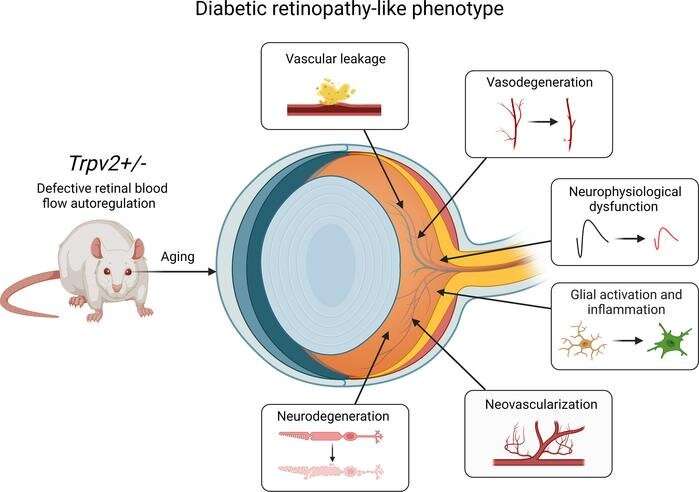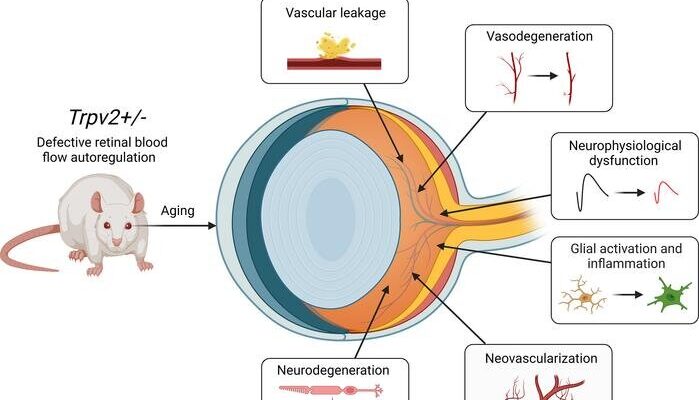
Researchers at Queen’s University Belfast have uncovered a key process that contributes to vision loss and blindness in people with diabetes. The findings could lead to new treatments that can be used before any irreversible vision loss has occurred.
Diabetic retinopathy is a common complication of diabetes and occurs when high blood sugar levels damage the cells at the back of the eye, known as the retina. There are no current treatments that prevent the advancement of diabetic retinopathy from its early to late stages, beyond the careful management of diabetes itself. As a result, a significant proportion of people with diabetes still progress to the vision-threatening complications of the disease.
As the number of people with diabetes continues to increase globally, there is an urgent need for new treatment strategies, particularly those that target the early stages of the disease to prevent vision loss.
The retina demands a high oxygen and nutrient supply to function properly. This is met by an elaborate network of blood vessels that maintain a constant flow of blood even during daily fluctuations in blood and eye pressure. The ability of the blood vessels to maintain blood flow at a steady level is called blood flow autoregulation. The disruption of this process is one of the earliest effects of diabetes in the retina.
The breakthrough made by researchers at Queen’s University Belfast pinpoints the cause of these early changes to the retina. The study, published in the journal JCI Insight, has discovered that the loss of blood flow autoregulation during diabetes is caused by the disruption of a protein called TRPV2. Furthermore, they show that disruption of blood flow autoregulation even in the absence of diabetes causes damage closely resembling that seen in diabetic retinopathy.
The research team are hopeful that these findings will be used to inform the development of new treatments that preserve vision in people with diabetes.
Professor Tim Curtis, deputy director at the Wellcome-Wolfson Institute for Experimental Medicine at Queen’s and corresponding author, explains, “We are excited about the new insights that this study provides, which explain how the retina is damaged during the early stages of diabetes. By identifying TRPV2 as a key protein involved in diabetes-related vision loss, we have a new target and opportunity to develop treatments that halt the advancement of diabetic retinopathy.”
Michael O’Hare et al, Loss of TRPV2-mediated blood flow autoregulation recapitulates diabetic retinopathy in rats, JCI Insight (2022). DOI: 10.1172/jci.insight.155128
Citation:
Uncovering the key process that contributes to vision loss and blindness in people with diabetes (2022, September 23)
retrieved 23 September 2022
from https://medicalxpress.com/news/2022-09-uncovering-key-contributes-vision-loss.html
This document is subject to copyright. Apart from any fair dealing for the purpose of private study or research, no
part may be reproduced without the written permission. The content is provided for information purposes only.
Source link




